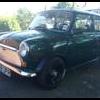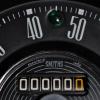
1500 Words About The Fourstroke Cycle / Otto Cycle
#16

Posted 14 June 2009 - 09:23 PM
#17

Posted 14 June 2009 - 09:32 PM
#18

Posted 14 June 2009 - 10:26 PM
A brief history of the four stroke cycle.
The four stroke cycle was patented for the first time in 1854 by Eugenio Barsanti and Felice Matteucci by 1860 two Italians had developed the first prototype. Although a German engineer called Nicolaus Otto was the first to create a functioning four stroke engine that was demonstrated in 1876. This is why they four stroke cycle is often known today as the Otto cycle. Four stroke engines are one of the most common forms of internal combustion engine today.
The four strokes are:
• Intake stroke
• Compression stroke
• Combustion stroke
• Exhaust stroke
The intake stroke - during the intake stroke fuel and air mixture is pulled or (forced) into the cylinder when the intake valve is open. This happens on the downward stroke.
The compression stroke – the intake valve closes and the piston is forced upward by momentum of the fly wheel compressing the fuel and air mixture.
The combustion stroke – the piston reaches the top of the compression stroke the compressed fuel and air mixture is ignited the expansion from the reaction forces the piston down.
The exhaust stroke – the piston reaches the bottom of the combustion stroke the exhaust valve opens and the momentum of the fly wheel pushes the piston upward forcing the exhaust gases and any other deposits out of the cylinder. The piston reaches the top of the exhaust stroke the exhaust valve closes and the cycle can begin all over again.
Meany four stroke engines include more than one cylinder and have different arrangements for the camshaft (duel, overhead, etc.) engines may feature fuel injection systems, turbo chargers and multiple valves any of theses enhancements do- not change the basic operation of the engine using the four stroke cycle or Otto cycle.
Main components of the four stroke cycle
In most internal combustion engines using the four stroke cycle many components are needed to work together in sync for the engine to run properly to understand these components more easily some more information is needed. In a petrol engine exhaust and inlet manifolds (these are like tunnels) and valve ports (inlets and outlets) are needed to provide fuel and air on the intake stroke of the engine, and to expel burned gases on the exhaust stroke. The ports are opened and closed at the proper times by the intake and exhaust valves, which close against the sides of the ports to create a seal. The valves are controlled by the camshaft, a camshaft has lobes on it these lobes are all shaped differently, but resemble an oval on a camshafts lobe sits a lifter. A lifter is cylindrical in shape and pushes up on a push rod, when the lobes are rotating on the camshaft. A push rod is connected to a rocker arm witch then “rocks” down on a spring that is connected to the valve holding it closed when the spring is pushed by the rocker arm the valve opens. This all happens due to the rotation of the camshaft witch is connected via gears to the crankshaft (that the pistons connect to) these are all parts of the four stroke cycle that are needed for the engine to function properly.
During the intake stroke the piston moves down from its top dead center (TDC) this is the farthest up position this creates a partial vacuum, this draws in fresh fuel and air mixture from the open intake valve. As the piston is moving down closer to the bottom dead center (farthest the piston goes down) the intake valve begins to close. The valve is kept open as long as possible to get as much fuel and air mixture in the cylinder as it can. But as soon as the piston passes bottom dead center (BDC) the valve closes at this time and all through the intake stroke the exhaust valve is close, The cycle the proceeds onto the next stroke the compression stroke.
The compression stroke is less complicated compared with the intake stroke. This is because on the compression stroke all the valves remain closed, as the piston is driven up the cylinder by the crank shaft. The piston rings are important creating a seal around the wall of the cylinder allowing the fuel and air mixture in the sealed cylinder to be compressed (this is why it is known as the compression stroke). Compressing the mixture is important for creating power as it forces the fuel molecules together this aids combustion as more of the petrol is burnt releasing more energy and making the engine more efficient. Since compression and power are directly related the valves must be tightly sealed, because any leakage would decrease the compression and there would be a loss of power. The fuel and air mixture compressing the cycle leads to the next stroke this is the ignition stroke.
The power stroke starts just before the piston reaches top dead center or (TDC) on the compression stroke. The fuel is ignited by a sparkplug this causes the fuel and air mix to combust. The gasses created from this reaction expand creating large amounts of pressure in the sealed cylinder this forces the piston down the cylinder. This is the power stroke during the stroke the valves remain closed and they and the piston rings up against the cylinder have to seal the around 750 pounds of pressure per square inch (PSI).
As the piston moves down there is still pressure left in the cylinder but this is of no use to the engine for power. The exhaust valve is opened releasing the pressure that would resist the piston on the exhaust stroke.
The exhaust stroke begins with the exhaust valve open and the inlet valve still closed. The piston moves upwards pushing hot gases out of the cylinder through the open exhaust valve port. The exhaust valve remains open for the whole of the exhaust stroke and partially into the intake stroke to ensure none of the burnt gases are still in the cylinder. This concludes the cycle.
The four stroke cycle keeps repeating over and over until the engine is shut down.
A four stroke petrol engine in a car doing about 2200RPM (revolutions per minute) will complete the four stroke cycle around 18 per second. In order for the engine to run all of the parts must cooperate together in synchronization. If one or more things are off the engine will not run at its peek if not at all.
#19

Posted 14 June 2009 - 10:26 PM
#20

Posted 14 June 2009 - 10:38 PM
#21

Posted 14 June 2009 - 11:01 PM
so much to write i know and i only got tonight to bloody get the thing done lol im fecked! erm im writeing it like this as the guy reading it is going to know what im talking about any way right because hes a mechanic tutor dude so dosent matter because noone else is going to read it are they ? so j.w dose it matter? because that would save alot of hastel doing the way im doing it i duno im not good at explaing stuff to people who are none mechanicly minded I.E(SPECIAL PEOPLE) i duno owelyou have to write like the reader knows nothing about cars, teach them everything that is needed so they have a good knowlege of it all when you are done writing. id struggle to stop at 1500 words on this one. so much to write!
sorry please dont take enything iv said ofencivly im just in a Cr**py mood
#22

Posted 14 June 2009 - 11:07 PM
#23

Posted 14 June 2009 - 11:20 PM
Sometimes these types of assignments have to be written in the form that anyone could pick it up and follow along, but i would of thought you would have been told this in the brief for it. Sounds good though, another 400 odd words and your sorted
now u see hears the problem 1000 words can be typed the rest has to be hand writen. I suck at writeing even worse than i suck at typeing asin slow ands scruffy and some how by tomoro i have to scan it in as i got to try emailing it to the collage as i have no way of geting there i debating wether its worth just not going to collage and going to find an aprentiship, lol but i dont realy want to do that atm it sounds more appealing tho warm comfy bed or sit up writeing about so SH**! guse the last to letters XD erm
i dont think it said that on the brief
im confused
The task is to explain the basic principle...... dosent say enything about explain for mentaly chalanged people? haha i should be ok now to start trying to write some stuff up neatly about the workin principles of a four stroke cycle ??????? whats that could you tell me what im ment to put for that or what it means im clueless
maby i should write this for myself i seem prity mentaly chalanged atm.....
#24

Posted 15 June 2009 - 11:31 AM
Cheers...its my last one, can't wait to be over for summer

Yep. I actually study physics at Exeter uni. The thermo module is pretty much based around the link between pressure and temperature and the laws of thermodynamics. A couple of months ago i did an experiment into the thermal efficiency of the Otto cycle, comparing it to a highly idealized model. Turned out that the efficiency of most gasoline fueled cycles is around 35%...pretty poor!
hope u tested it against mini engines most of them are prity fuel efficant and that if set up corectly....
I hope you're taking the... ahem...
Even a well set up gas, (americanism - sorry, petrol) engine, as stated above, is at most 40% efficient, that is only about 40% of the specific energy in the fuel becomes power and torque to drive the car. The rest is lost as friction, heat, noise, electrical, expelled fuel, etc, etc...
Also, the description above mentions pushrods, most modern engines use over-head cams - thus no pushrods, so be careful with that statement.
Lastly, you could add a few lines on the Diesel, make sure you use a capital D, as it's named after it's inventor, so a pro-noun, unlike petrol or gasoline.
Also include the diagram of a perfect cycle compared to the Otto cycle, possibly also the Diesel cycle, they are all different.
Lastly, didn't notice any mention of spark ignition compared to compression ignition, but could be worth mentioning.
All this and it's my lunch break...
1 user(s) are reading this topic
0 members, 1 guests, 0 anonymous users














